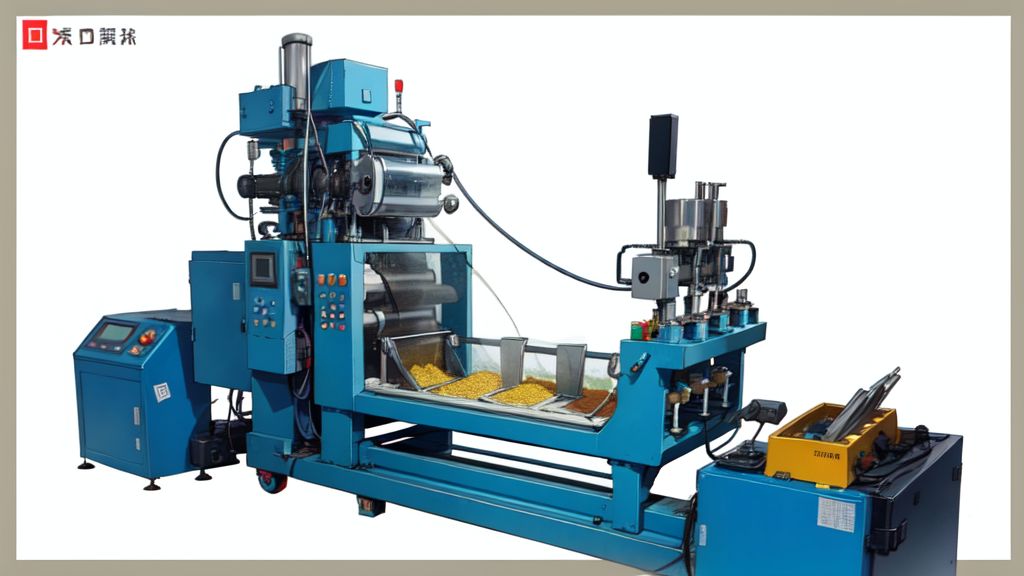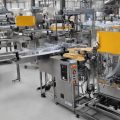1. Understand Your Packaging Needs
The first step in choosing a packing machine is to understand your specific packaging needs. This includes the type of products you are packaging, the volume of production, and the type of packaging material you will be using. Different products require different types of packing machines, so it is important to identify your needs clearly.
2. Determine the Type of Packing Machine
Packing machines come in various types, including manual, semi-automatic, and automatic machines. Manual machines require human intervention for operation, while semi-automatic machines require some human intervention but can perform certain tasks automatically. Automatic machines, on the other hand, can perform all tasks without human intervention. The choice of machine type depends on your production volume and budget.
3. Consider the Packaging Speed
The packaging speed of a machine is measured in bags per minute (bpm). Some packing machines have a speed range of 25-100 bpm. The speed requirement will depend on your production volume. High-speed machines are suitable for large-scale production, while lower-speed machines are ideal for small-scale operations.
4. Evaluate the Features
Different packing machines come with various features, such as the ability to handle different package dimensions, weights, and volumes. It is important to choose a machine that can accommodate the specific features of your products. Additionally, consider features like ease of operation, maintenance requirements, and the availability of spare parts.
5. Assess the Packing Method
There are two main packing methods: roll stock film and pre-made packs. Roll stock film involves wrapping a film around the product, while pre-made packs involve using pre-prepared packs. Choose a packing machine that supports your preferred packing method.
6. Consider the Cost
The cost of a packing machine includes the purchase price, operation costs, and maintenance costs. Higher-priced machines often offer more efficiency and advanced features. However, it is important to choose a machine that fits within your budget while meeting your production needs.
7. Evaluate the Environmental Impact
Consider the environmental impact of the packing machine. Choose machines that minimize the wastage of packaging materials and use environmentally friendly materials. Newer machines are often more energy-efficient than older models.
8. Check the Packaging Size and Capacity
Packing machines come in different sizes and capacities. Choose a machine that can handle the size and volume of your products. Consider the packaging sizes you will be using, such as 25g, 50g, or 100g packets, and ensure the machine can accommodate these sizes.
9. Material Compatibility
Ensure that the packing machine is compatible with the materials you will be using for packaging. Stainless steel machines are durable and resistant to corrosion, making them suitable for various materials. Aluminum machines are lightweight and strong, while plastic machines are versatile and cost-effective.
10. Employee Training
With the rapid advancement of technology, it is important to train your employees on how to operate the packing machine. Proper training ensures efficient operation, maintenance, and safety. Invest in training programs to enhance the skills of your staff.
11. Safety Considerations
Safety is a critical factor when choosing a packing machine. Ensure the machine has safety features to protect operators from potential hazards. Conduct a risk assessment and choose a machine with minimal risk potential.
12. Expected ROI
Calculate the expected return on investment (ROI) before purchasing a packing machine. Consider factors such as increased production efficiency, reduced labor costs, and improved product quality. A higher ROI indicates a better investment.
13. Sturdiness and Durability
Choose a packing machine with a robust design that can handle full production capacity without excessive downtime. Ensure the machine can run for extended periods without frequent part replacements.
14. Potential for Product Changeover
Consider the machine’s potential for product changeover. This is important if you plan to use the machine for multiple packaging needs. A versatile machine can handle different products and packaging requirements.
15. Key Features
Each packing machine comes with unique features, such as internal engines and components that enable efficient packaging and sealing. Inquire about the features and capabilities of the machine before making a purchase.
16. Efficiency
Ensure the efficiency of the packing machine is around 70-90%. A highly efficient machine can minimize production costs and enhance overall productivity.
17. Market Research
Conduct market research to identify high-quality packing machines that are affordable. Consider factors such as shipping and delivery fees, which can impact the actual selling price of the machine.
18. Types of Packing Machines
There are various types of packing machines, including filling and bottling machines, sterilization machines, carbonators, pasteurizers, and case packers. Each type of machine is designed for specific packaging tasks. Choose a machine that meets your specific needs.
19. Application
Consider the application of the packing machine. Some machines are used for filling and wrapping food and beverages, while others are customized for healthcare products or cosmetics. Ensure the machine has the requisite tools and mechanics to execute the expected tasks.
20. Conclusion
Choosing the right packing machine involves considering various factors, including your packaging needs, machine type, speed, features, cost, environmental impact, and safety. By carefully evaluating these factors, you can select a packing machine that meets your production requirements and enhances overall efficiency.





